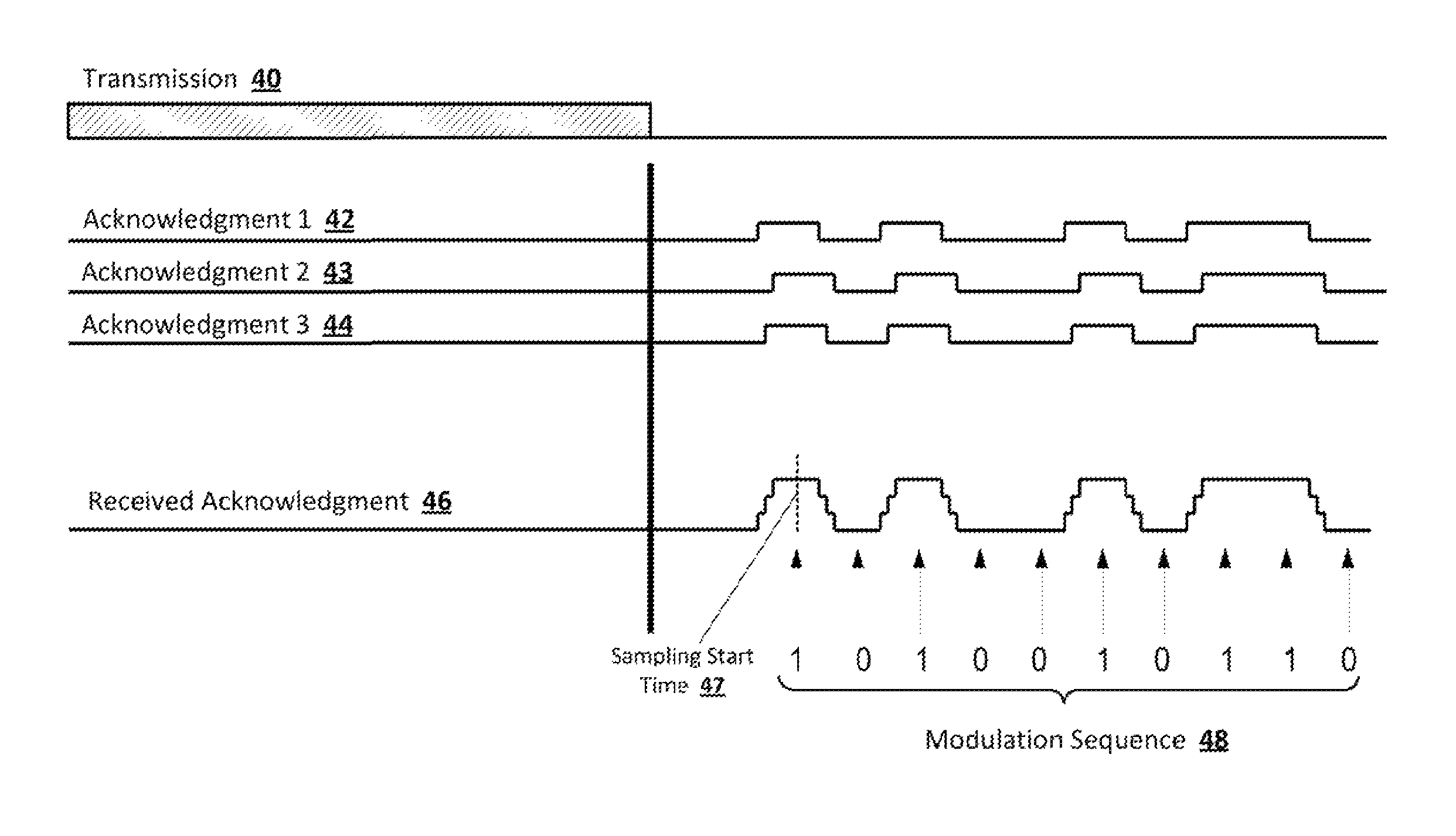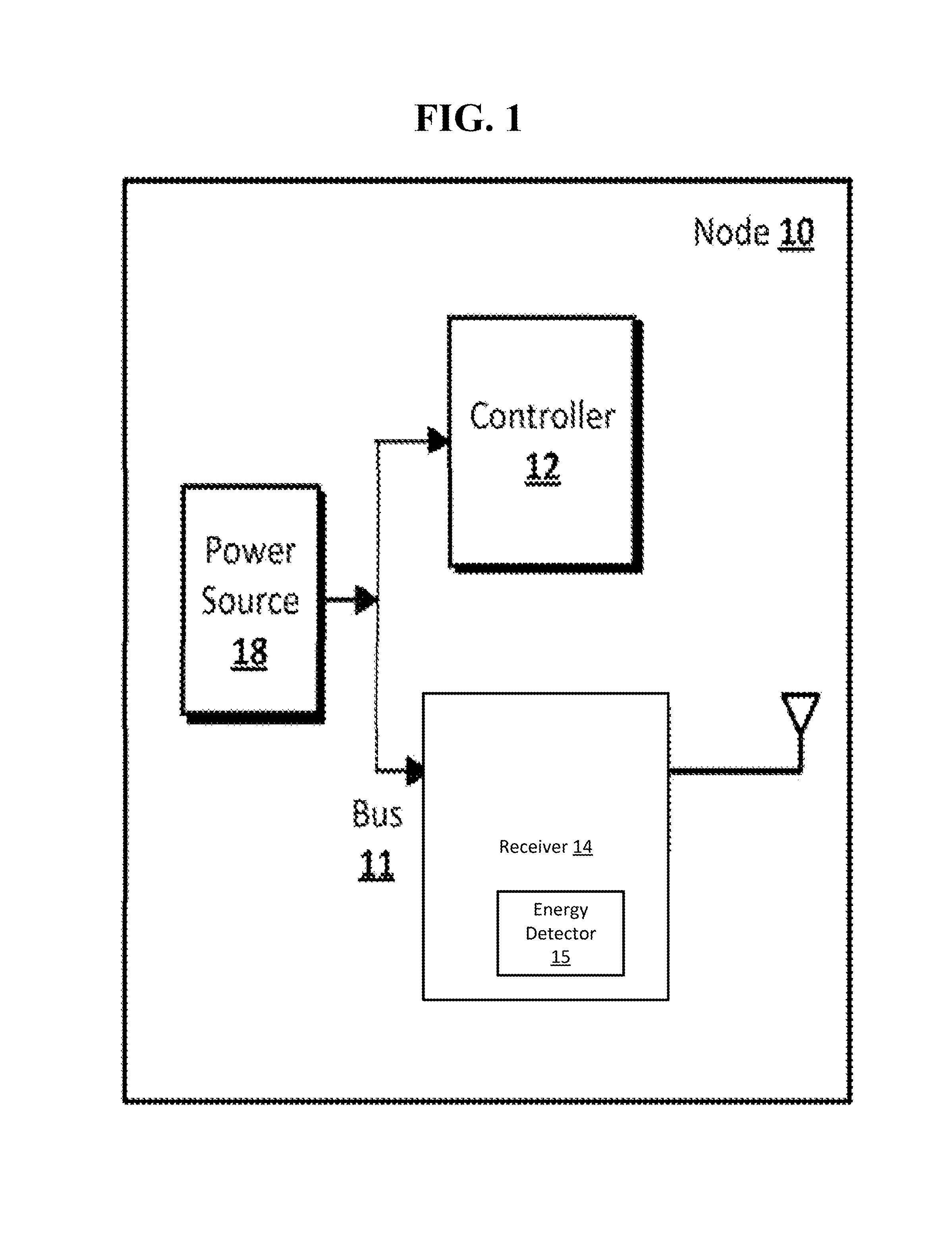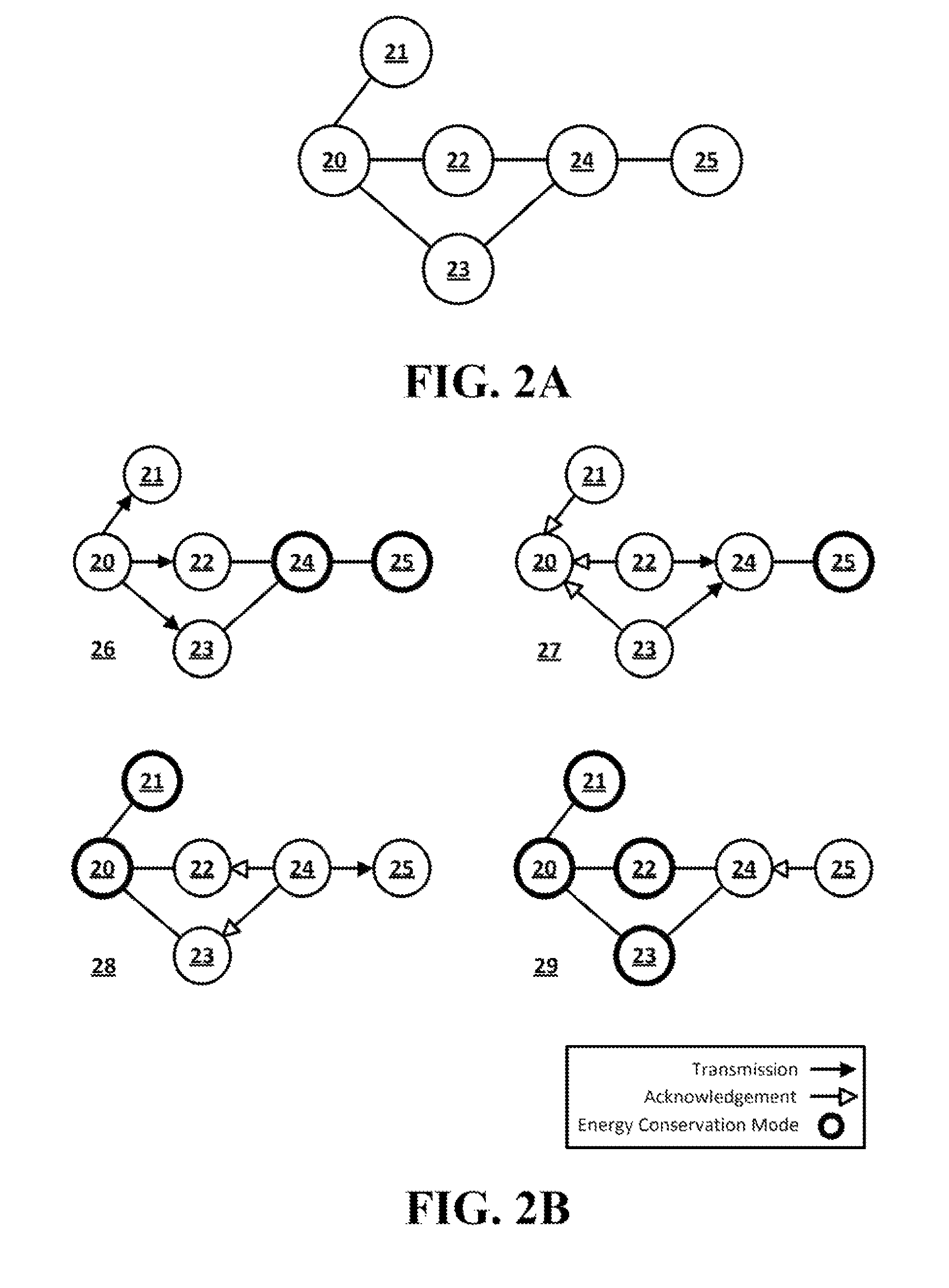Rapid acknowledgement of radio transmissions for energy minimization
a radio transmission and energy minimization technology, applied in the direction of power management, sustainable buildings, high-level techniques, etc., can solve the problems of increasing the power consumption of nodes in wireless networks such as sensor networks or control networks, and requiring more power for nodes in more complex modulation schemes. the effect of increasing the power consumption of the nod
- Summary
- Abstract
- Description
- Claims
- Application Information
AI Technical Summary
Benefits of technology
Problems solved by technology
Method used
Image
Examples
Embodiment Construction
[0012]Described is a more efficient technique for communicating amongst power constrained nodes in a network. In particular, described is an acknowledgment scheme that may reduce or minimize energy requirements for acknowledging successful receipt of a transmission between nodes. The scheme minimizes energy consumption by rapidly acknowledging successful receipt of the transmission and allowing multiple nodes to acknowledge concurrently. For example, if several nodes concurrently send an acknowledgment, the modulations of the acknowledgments may cause interference. The scheme provides the ability to accurately demodulate the interfering acknowledgments as if it were receiving a single acknowledgment transmission. The scheme may use an efficient modulation technique to reduce the amount of power consumption required to process and validate the acknowledgments. Accordingly, receipt of the acknowledgment may require only a rudimentary receiver in a node.
[0013]In order to minimize the c...
PUM
 Login to View More
Login to View More Abstract
Description
Claims
Application Information
 Login to View More
Login to View More - R&D
- Intellectual Property
- Life Sciences
- Materials
- Tech Scout
- Unparalleled Data Quality
- Higher Quality Content
- 60% Fewer Hallucinations
Browse by: Latest US Patents, China's latest patents, Technical Efficacy Thesaurus, Application Domain, Technology Topic, Popular Technical Reports.
© 2025 PatSnap. All rights reserved.Legal|Privacy policy|Modern Slavery Act Transparency Statement|Sitemap|About US| Contact US: help@patsnap.com



